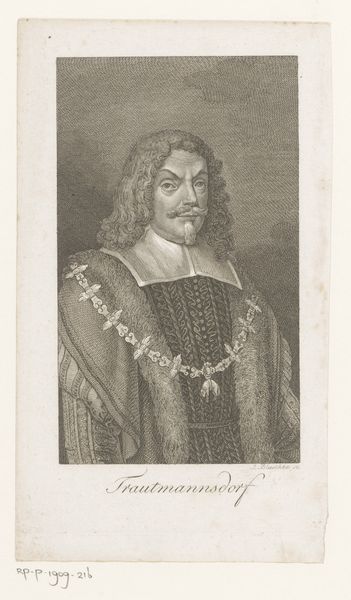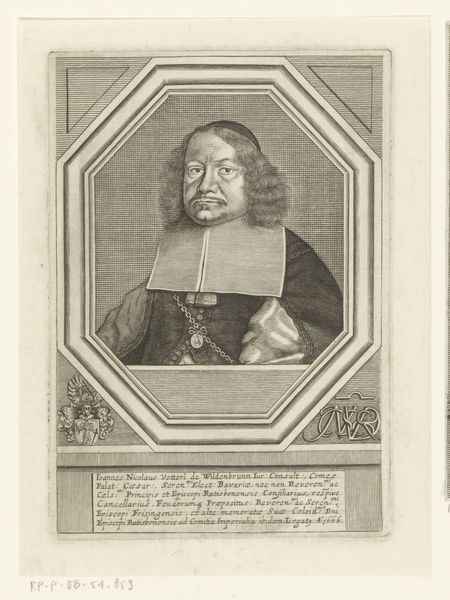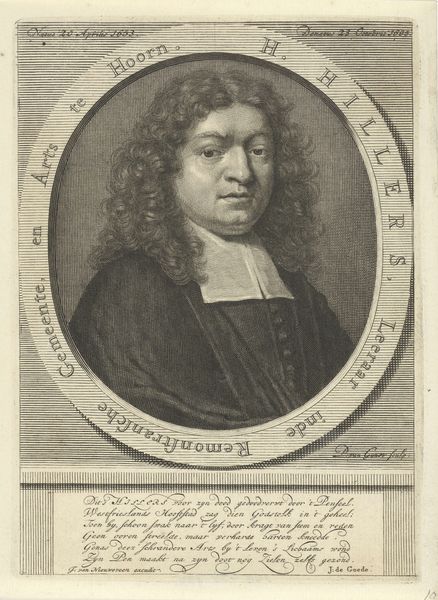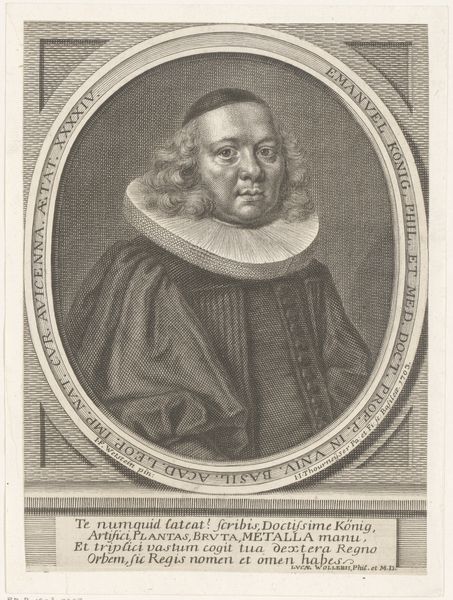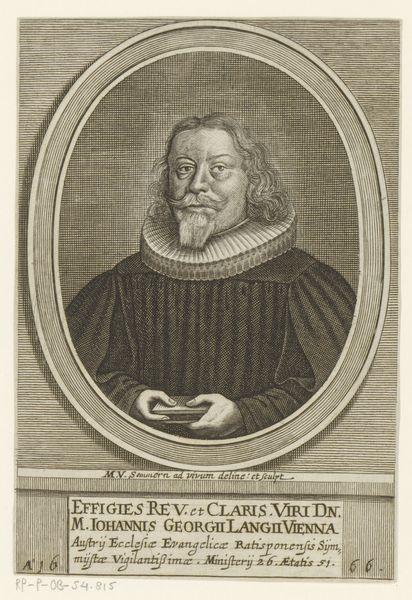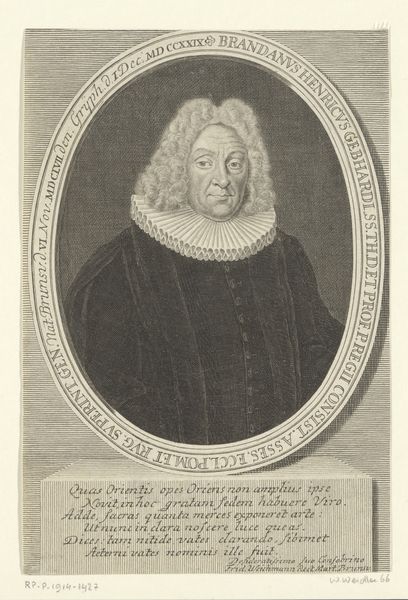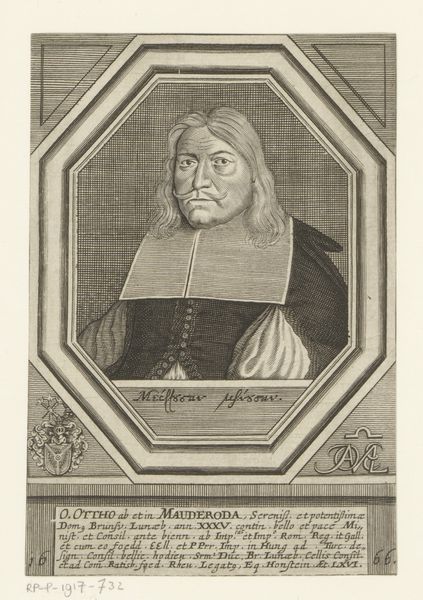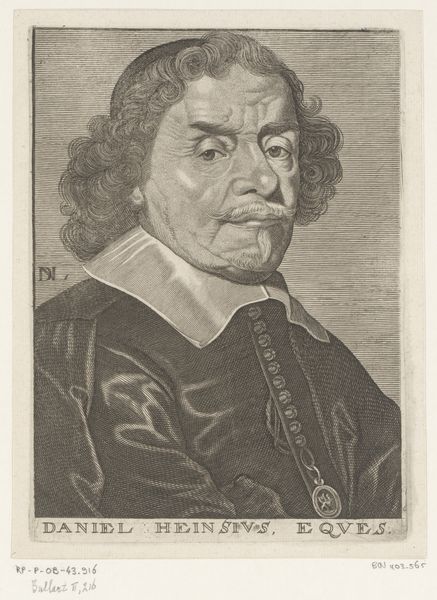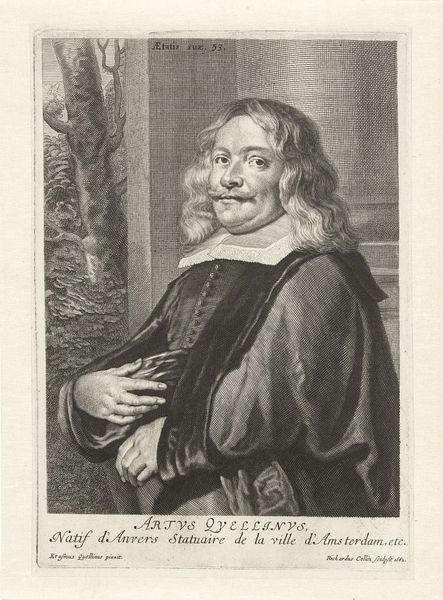
metal, engraving
#
portrait
#
baroque
#
metal
#
pencil drawing
#
history-painting
#
engraving
Dimensions: height 227 mm, width 140 mm
Copyright: Rijks Museum: Open Domain
Curator: Here we have a work entitled "Portret van Christoph Molitor," dating back to 1663. The artist rendered this portrait using engraving on metal. Editor: My initial impression is one of reserved opulence. The subject’s posture and gaze exude authority, framed by the intricate detail of the Baroque style. It feels simultaneously intimate and grand. Curator: The engraving process itself contributes significantly to the overall effect. Consider the labor involved: each line, each curve meticulously carved into the metal. The result is a study of contrasts: light and shadow dance across Molitor’s face, capturing a palpable sense of weight and presence. Editor: I see your point, but the way the engraver modulates tone and texture through line work also establishes form and depth, effectively constructing the three-dimensional figure of Molitor within the two-dimensional plane. The success of this image resides in the visual interplay. Curator: Indeed, and beneath the portrait, we see Latin text which serves to elevate Molitor, aligning him with classical ideals. The act of portraying him in this specific manner underscores the subject’s societal standing. This also demonstrates the power of art to perpetuate social structures. Editor: Perhaps, but I think the material specificity adds another layer. Metal engraving was considered both high art and a trade; Molitor, the person being portrayed and immortalized through a medium, simultaneously elevates the craftsman to the level of artist. Curator: I appreciate you highlighting the process. Examining "Portret van Christoph Molitor," through both the lens of technique and that of visual structure gives a much fuller understanding of what this work communicates to us. Editor: Precisely. It pushes us to consider not just the what but also the how and the why of artmaking.
Comments
No comments
Be the first to comment and join the conversation on the ultimate creative platform.


